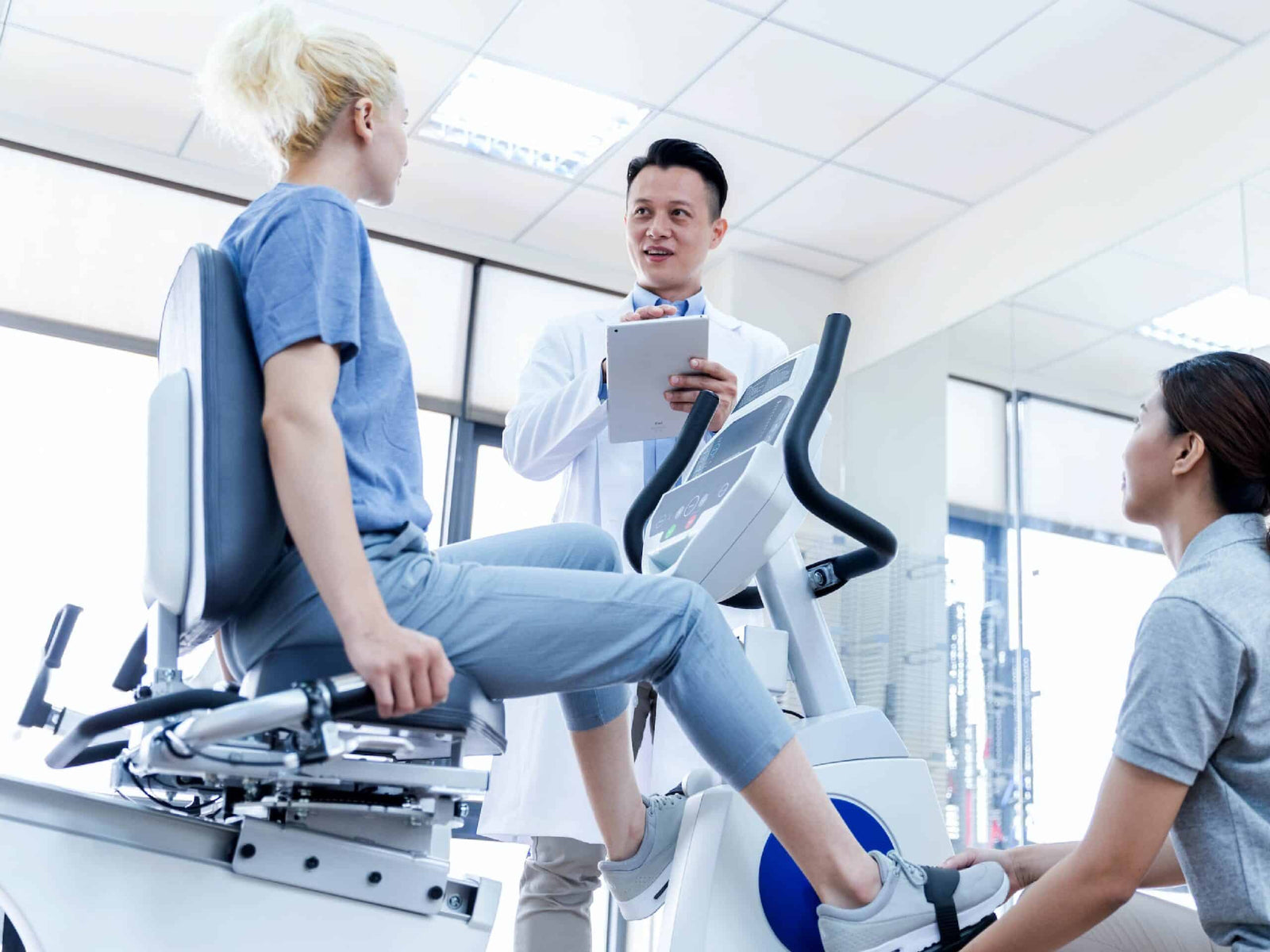In the world of cardiovascular and rehabilitative fitness equipment, recumbent bikes occupy a unique position: combining comfort, safety, and effectiveness in a way that upright bikes alone often can’t. Rehab Technology, for example, offers a comprehensive line of recumbent bikes designed to meet a wide array of needs—from clinical rehabilitation and accessible cardio to high-performance fitness.
Here’s why they matter, what features to look out for, and some key models from Rehab Technology that stand out.
Why Choose a Recumbent Bike?
-
Low impact on joints and back
Because of the reclined seating position, recumbent bikes reduce pressure on knees, hips, and lower back. For people recovering from injuries, dealing with arthritis, or sensitive to strain, this can make a big difference. -
Enhanced stability and safety
Many recumbent models have low step-through frames, large supportive seats with backrests, and stable pedal positioning. This is especially helpful for older adults, those with mobility limitations, or anyone who feels insecure on upright bikes. Rehab Technology has several low-step-through designs. -
Comfort for longer sessions
The seat and backrest design lets users spread out their body more, support more of the torso, and generally stay in a more relaxed posture. This often translates into being able to exercise longer with less fatigue. -
Accessibility and rehabilitation applications
Features such as adjustable/recline seats, removable seats or swivel mechanisms (for ease of transferring from wheelchair or assisting caregivers), even active/passive modes (where the bike moves the pedals for you) are hugely useful in rehab settings. Rehab Technology’s medical/rehab-section bikes often include such options.

Key Features to Compare
When choosing a recumbent bike (whether for clinic, gym, or home), here are the features that make a difference:
| Feature | Why It Matters |
|---|---|
| Weight capacity & frame strength | To safely support heavier users, especially in medical/rehab settings. Many models from Rehab Technology support 150-200kg or more. |
| Resistance levels, programs & control modes | The more adjustable/responsive the resistance, the better you can adapt workouts for different levels of fitness, rehab stage, or therapy protocols. Some bikes offer fine gradation, bi-directional pedalling, or specific protocols (e.g. cardiac stress testing). |
| Ergonomics: seating, backrest angle, seat adjustability | Being able to adjust the seat back angle, recline, seat height or position helps with comfort, helps users get to correct biomechanics, and reduces injury risk. |
| Ease of ingress/egress | Low step-through design, swivel seats, and removable seats—these are crucial for people with limited mobility. |
| Program features & tracking | Pre-set workout programs, leg/upper body combinations, active/passive modes. Also, data export or connectivity can support clinical monitoring. |

Notable Recumbent Bikes from Rehab Technology
Here are some stand-out models and what makes them interesting:
- SportsArt C565R Essential Series Recumbent Cycle — A robust build with 180kg weight limit; nice for heavier users.
- Dyaco 8.5R MED Medical Rehabilitation Recumbent Bike — Very high workload range (5–1200 W), lots of resistance levels, medical/rehab-oriented controls, and great for therapeutic use.
- INNOFIT Edge Endurance Recumbent Bike — Offers many resistance levels (32 levels), lots of programs (17), good capacity, and a comfortable design.
- Tunturi E60R Performance Recumbent Bike — More affordable option, yet still with strong features: ergometer accuracy, high user weight capacity, smart app connectivity. Good for both home use or lighter clinic demand.
Who Benefits Most
- Rehabilitation patients — Those recovering from injury or surgery, especially to hips, knees, spine; people needing controlled, gentle cardio.
- Older adults / those with limited mobility — Lower risk of falls, easier to get on/off, more comfortable posture.
- Chronic conditions — People with arthritis, lower back pain, cardiac conditions, where upright exercise is difficult or painful.
- General fitness — Even for people without injury, recumbent bikes let you do longer, consistent cardio with less discomfort.

Considerations and Downsides
- Size & space — Many recumbent bikes are large; need to ensure sufficient floor space.
- Less intense upper body engagement — Unless combined with upper body or full body trainers, the workload is mostly focused on legs.
- Cost — Medical-grade or feature-rich recumbents tend to be expensive. Rehab Technology’s line includes high-end models.
- Motivation/engagement — For some, the upright posture and “riding outdoors” feel have more motivational pull.
Tips for Getting the Most Out of a Recumbent Bike
- Fit is everything — Adjust seat back angle, recline, seat position so that when you pedal, your leg has a comfortable extension but isn’t locked out.
- Warm up properly — Even though it’s lower impact, your muscles and joints still need to be warmed up.
- Use interval training — If your bike supports it, mix higher resistance or faster cadence with recovery periods to boost cardiovascular efficiency.
- Monitor progress — If possible, use models with data tracking, heart rate monitoring, or export features, especially in rehab.
- Combine with other modalities — Flexibility, strength, and balance training are all helpful complements to maximise functional improvements.

Recumbent bikes are a powerful tool in both rehabilitative and general fitness settings, offering safety, comfort, and adaptability. Rehab Technology’s range shows just how diverse and capable modern recumbent bikes have become, from high-performance, medically certified models to more accessible, user-friendly pieces. If you're considering adding one to your clinic, gym, or home, the key is matching the features to who will use it, how often, and for what purpose.
